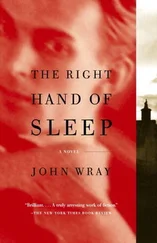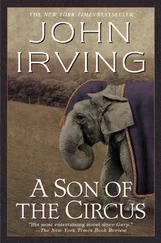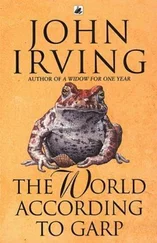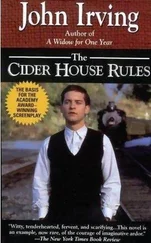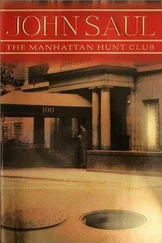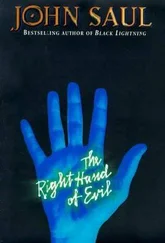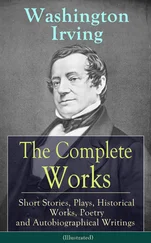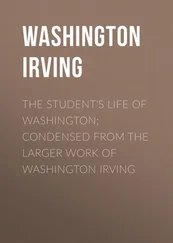Doris said—meaning he had missed two hunting seasons, back-to-back. If that wasn’t lesson enough, the murdered eagle’s talon remained as further evidence against him.
“Donny,” Doris said, shaking her head as she uttered the eagle-killer’s name. Attached to the plush lining of the jewelry box (by a safety pin) was a photo of Donny—he looked crazed. He was a grown man now, with children of his own; when his kids saw the talon, they were probably ashamed of their father all over again.
Mrs. Clausen’s telling of the tale was sobering, and she related it in the manner that it had been told to her—a cautionary tale, a moral warning. DON’T SHOOT
EAGLES!
“Donny was always a wild hair,” Mrs. Clausen reported.
In his mind’s eye, Wallingford could see them interacting—the ghosts in the photographs, the fishermen who had caught the shellacked fish, the hunters who’d shot the deer and the crow and the eagle. He imagined the men standing around the barbecue, which was covered with a tarp and stowed on the sundeck under an eave of the roof.
There was an indoor and an outdoor fridge, which Patrick imagined were full of beer. Mrs. Clausen later corrected this impression; only the outdoor refrigerator was full of beer. It was the designated beer fridge—nothing else was allowed in it. While the men watched the barbecue and drank their beer, the women fed the children—at the picnic table on the deck in good weather, or at the long diningroom table when the weather was bad. The limitations of space in cottage life spoke to Wallingford of children and grown-ups eating separately. Mrs. Clausen, at first laughing at Patrick’s question, confirmed that this was true. There was a row of photographs of women in hospital gowns in beds, their newborns beside them; Doris’s photo was not among them. Wallingford felt the conspicuousness of her and little Otto’s absence. ( Big Otto hadn’t been there to take their picture.) There were men and boys in uniforms—all kinds of uniforms, military and athletic—and women and girls in formal dresses and bathing suits, most of them caught in the act of protesting that their pictures were being taken. There was a wall for dogs—dogs swimming, dogs fetching sticks, some dogs forlornly dressed in children’s clothes. And in a nook above the dresser drawers in one of the bedrooms, inserted by their edges into the frame of a pitted mirror, were photos of the elderly, probably now deceased. An old woman in a wheelchair with a cat in her lap; an old man without a paddle in the bow of a canoe. The old man had long white hair and was wrapped in a blanket like an Indian; he seemed to be waiting for someone to sit in the stern and paddle him away. In the hall, opposite the bathroom door, was a cluster of photographs in the shape of a cross—a shrine to a young Clausen male declared missing-in-action in Vietnam. In the bathroom itself was another shrine, this one to the glory days of the Green Bay Packers—a hallowed gathering of old magazine photos picturing the “invincible ones.”
Wallingford had great difficulty identifying these heroes; the pages torn from magazines were wrinkled and water-spotted, the captions barely legible. “In a locker room in Milwaukee,” Wallingford struggled to read, “after clinching their second Western Division championship, December 1961.” There were Bart Starr, Paul Hornung, and Coach Lombardi—the coach holding a bottle of Pepsi. Jim Taylor was bleeding from a gash on the bridge of his nose. Wallingford didn’t recognize them, but he could identify with Taylor, who was missing several front teeth.
Who were Jerry Kramer and Fuzzy Thurston, and what was the “Packer sweep”? Who was that guy caked in mud? (It was Forrest Gregg.) Or Ray Nitschke, muddy and bald and dazed and bleeding; sitting on the bench at a game in San Francisco, Nitschke held his helmet in his hands like a rock. Who are these people, or who were they? Wallingford wondered.
There was that famous photo of the fans at the Ice Bowl—Lambeau Field, December 31, 1967. They were dressed for the Arctic or the Antarctic; their breath obscured their faces in the cold. Some Clausens had to have been among them. Wallingford would never know the meaning of that pile of bodies, or how the Dallas Cowboys must have felt to see Bart Starr lying in the end zone; not even his Green Bay teammates had known that Starr was going to improvise a quarterback sneak from the one-yard line. In the huddle, as every Clausen knew, the quarterback had called, “Brown right. Thirty-one wedge.” The result was sports history—it just wasn’t a history Wallingford knew.
To realize how little he knew Mrs. Clausen’s world gave Patrick pause. There were also the personal but unclear photos that required interpretation to outsiders. Doris tried to explain. That hulking rock in the wake off the stern of the speedboat—that was a black bear, discovered one summer swimming in the lake. That blurry shape, like a time-lapsed photograph of a cow grazing out-of-place among the evergreens, was a moose making its way to the swamp, which according to Mrs. Clausen was “not a quarter of a mile from here.” And so on… the confrontations with nature and the crimes against nature, the local victories and the special occasions, the Green Bay Packers and the births in the family, the dogs and the weddings.
Wallingford noted, as quickly as he could, the photograph of Otto senior and Mrs. Clausen at their wedding. They were carving the cake; Otto’s strong left hand covered Doris’s smaller hand, which held the knife. Patrick experienced a pang of familiarity when he saw Otto’s hand, although he’d not seen it with the wedding ring before. What had Mrs. Clausen done with Otto’s ring? he wondered. What had she done with hers?
At the front of the well-wishers who surrounded the cutting of the cake, a young boy stood holding a plate and a fork. He was nine or ten; because he was formally dressed like the other members of the wedding party, Patrick assumed he’d been the ring bearer. He didn’t recognize the kid, but since the ring bearer would be a young man now, Wallingford realized that he might have met him. (In all likelihood, given the boy’s round face and determined cheerfulness, he was a Clausen.)
The maid of honor stood beside the boy, biting her lower lip; she was a pretty young woman who seemed easily distracted, a girl often swayed by caprice. Like Angie, maybe?
At a glance, Patrick knew he’d never met her before; that she was the kind of girl he was familiar with, he also knew. She was not as nice as Angie. Once upon a time, the maid of honor might have been Doris’s best friend. But the choice could also have been political; possibly the wayward-looking girl was big Otto’s kid sister. And whether or not she and Doris had ever been friends, Patrick doubted that they were friends now.
As for the sleeping arrangements, Wallingford’s first look at the two finished rooms above the boathouse made the matter clear. Doris had set up the portable crib in the room with the twin beds, one of which she’d already used as a makeshift changing table—little Otto’s diapers and clothes were arrayed there. Mrs. Clausen told Patrick that she would sleep in the other twin bed in that room, which left the second room above the boathouse to Wallingford; it had a queensize bed, which looked bigger in the narrow room. As Patrick unpacked his things, he noted that the left side of the bed was flush to the wall—that would have been Otto senior’s side. Given the narrowness of the room, the only way into the bed was from Doris’s side; even then, the passage was skinny. Maybe Otto senior had climbed in from the foot of the bed. The walls of the room were the same rough pine as the interior of the main cabin, although the pine boards were lighter, almost blond—all but one large rectangle near the door, where perhaps a picture or a mirror had been hung. Sunlight had bleached the walls almost everywhere else. What had Mrs. Clausen taken down? Thumbtacked to the wall, above Otto senior’s side of the bed, were various photos of the restoration of the rooms above the boathouse. There was Otto senior, without a shirt, tanned and well muscled. (The carpenter’s belt reminded Patrick of the tool belt Monika with a k had had stolen from her at the circus in Junagadh.) There was also a photo of Doris in a one-piece bathing suit—a purple tank, conservatively cut. She had her arms crossed over her breasts, which made Wallingford sad; he would have liked to have seen more of her breasts. In the photograph, Mrs. Clausen was standing on the dock, watching Otto senior at work with a table saw. Since there was no electricity at the cottage on the lake, the gasoline generator on the dock must have supplied the power. The dark puddle at Doris’s bare feet suggested that her bathing suit was wet. Quite possibly, she’d hugged her arms to her breasts because she was cold.
Читать дальше

